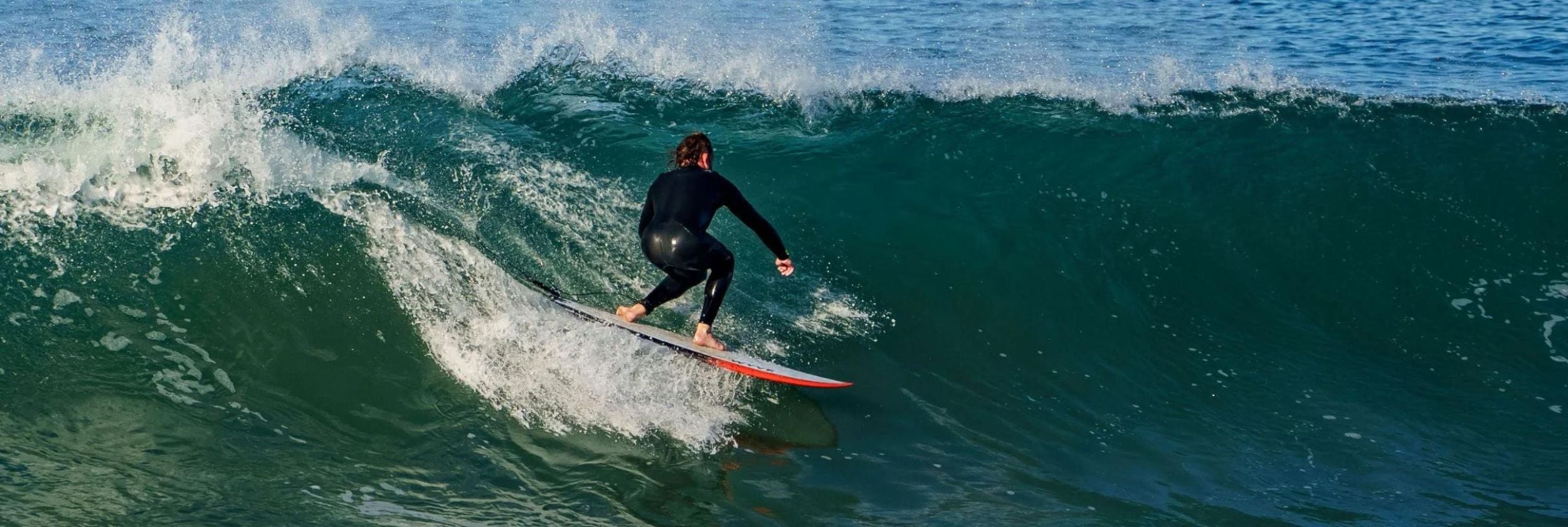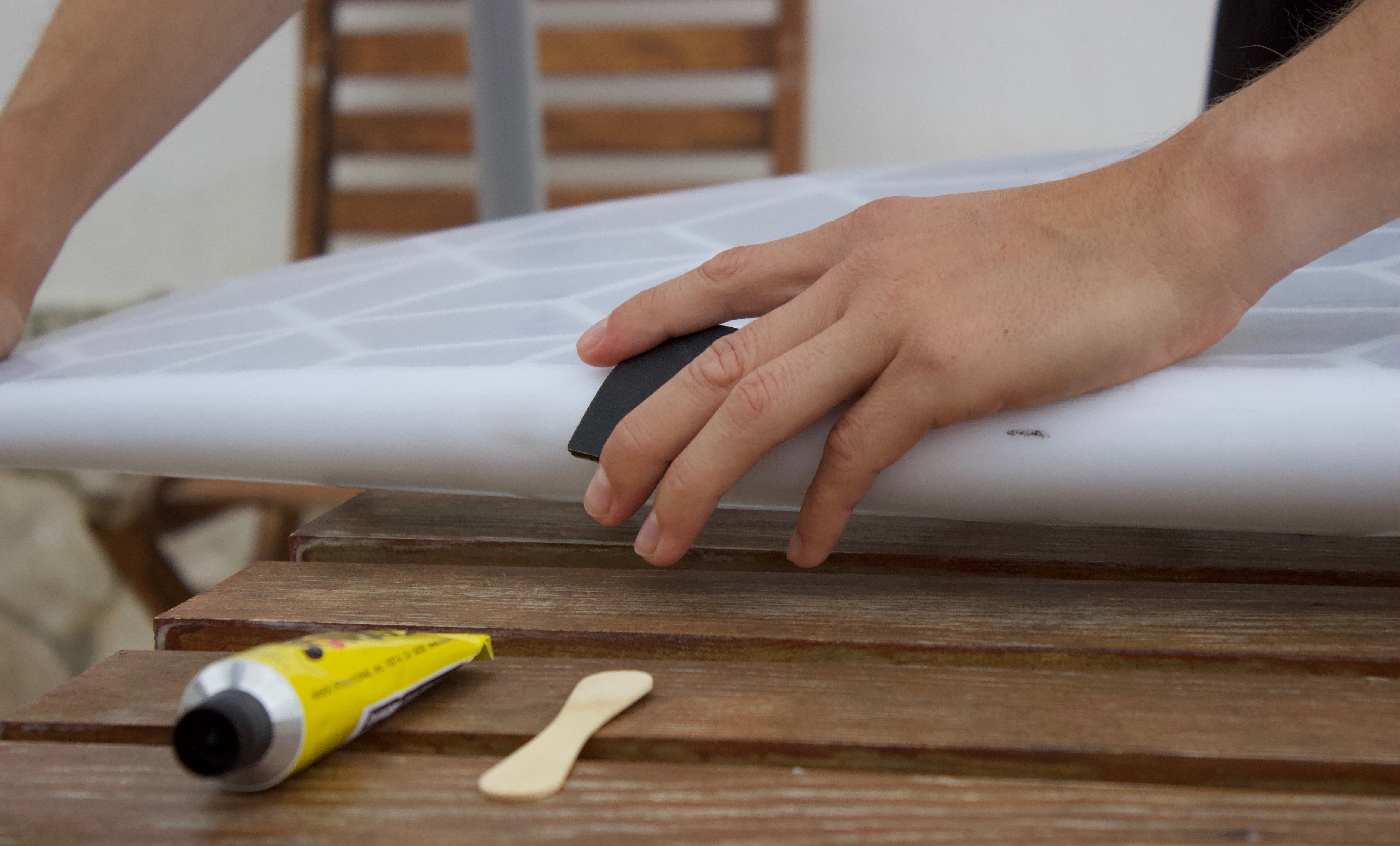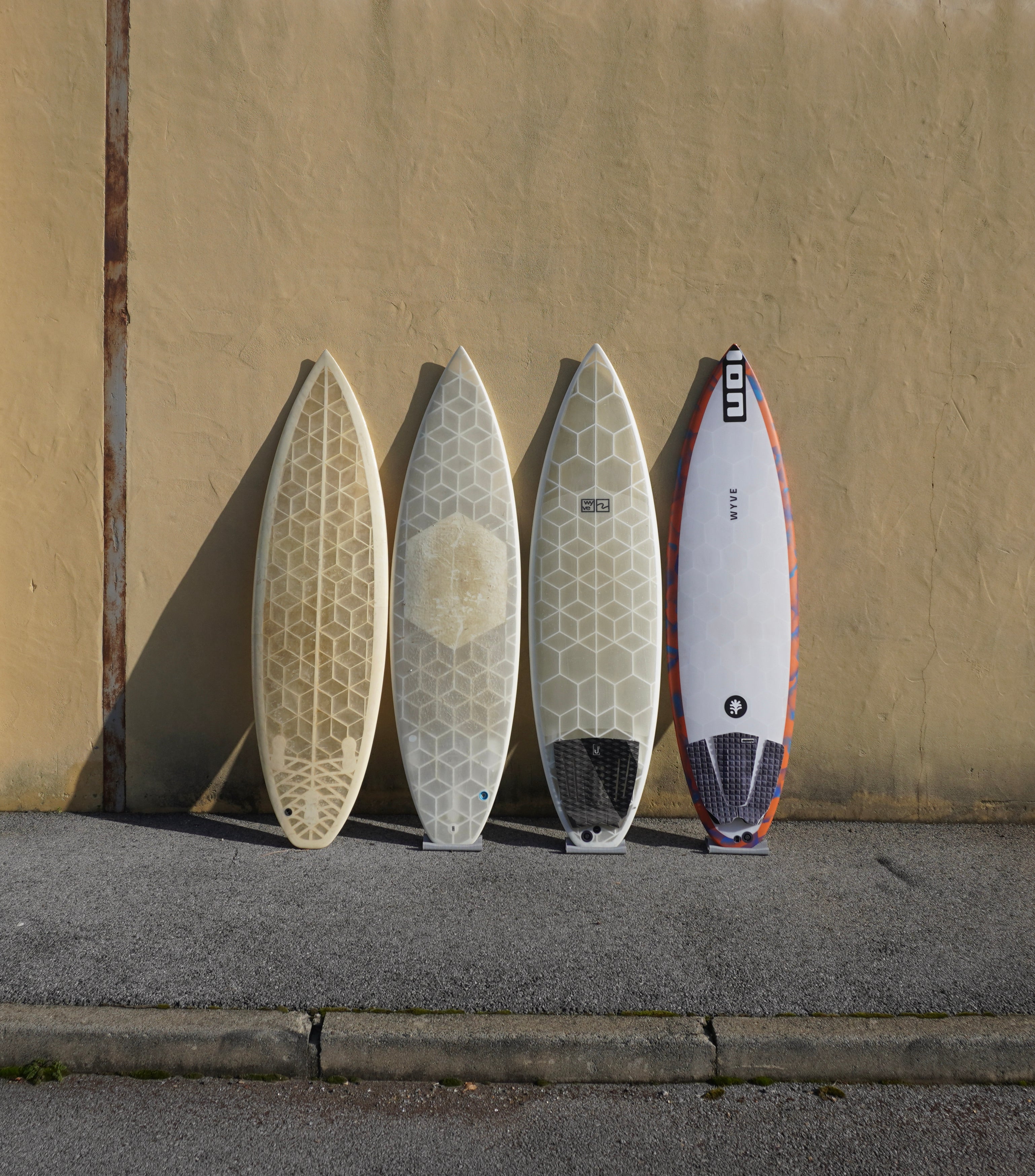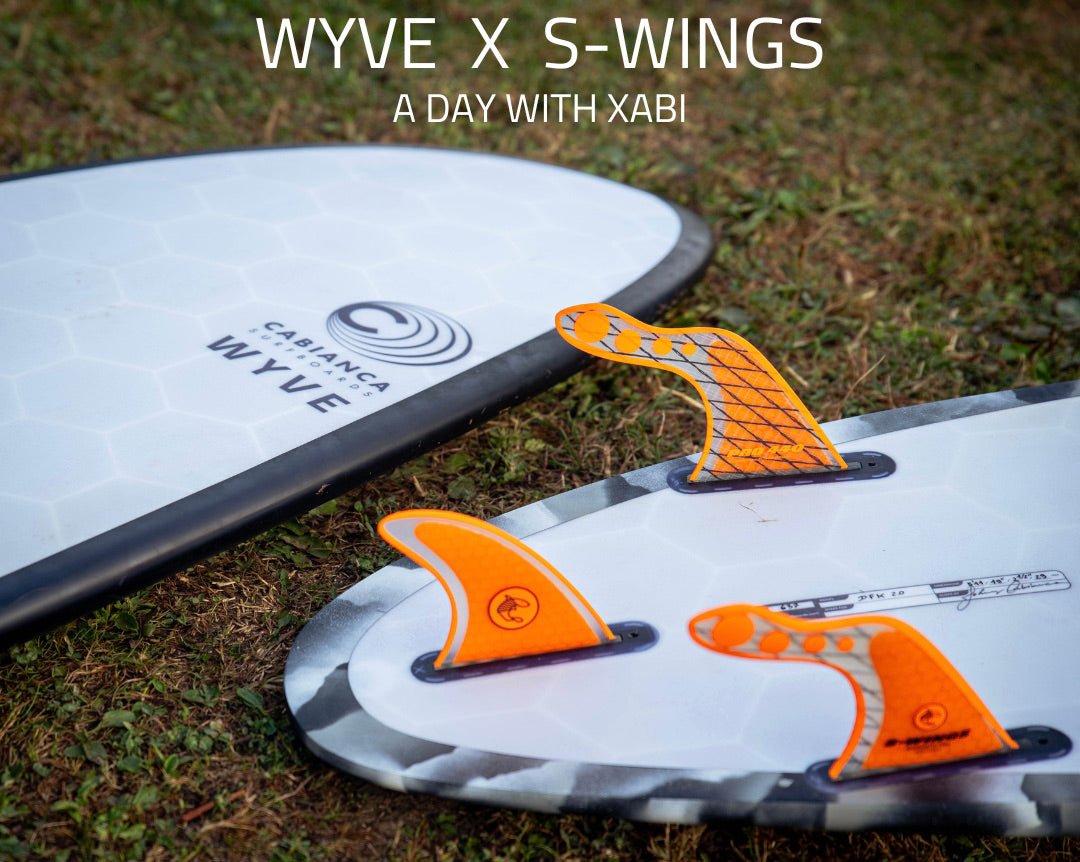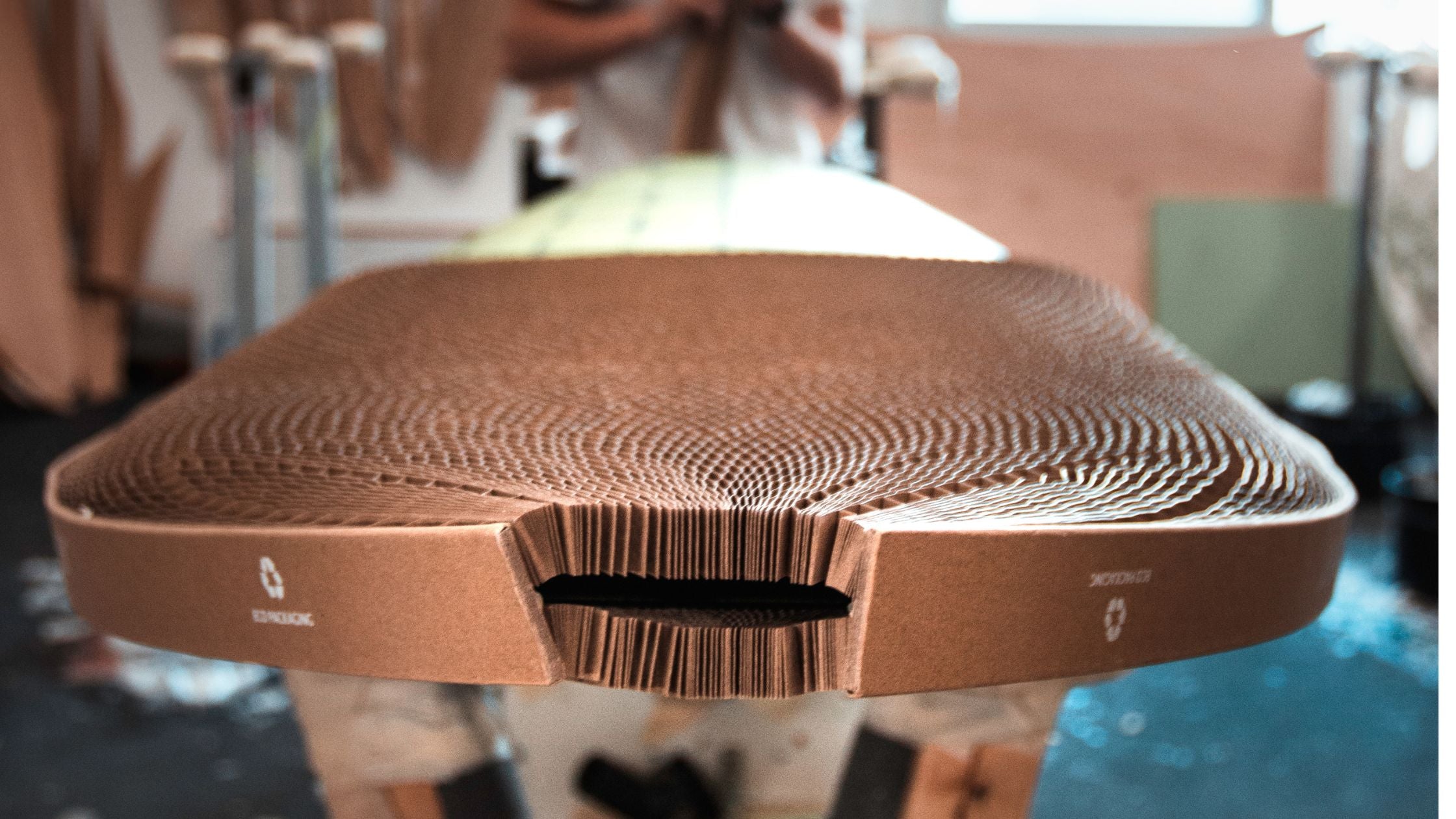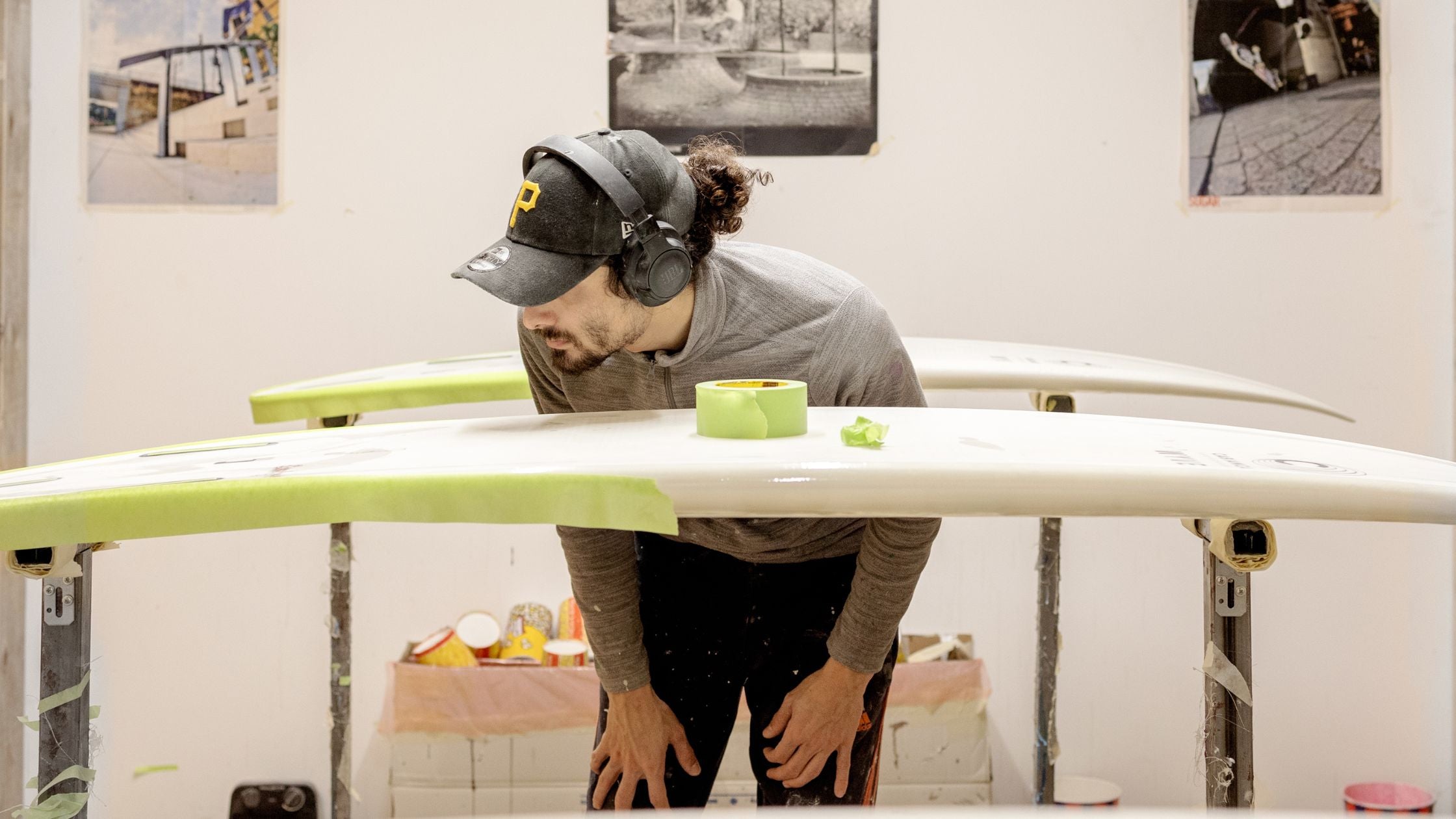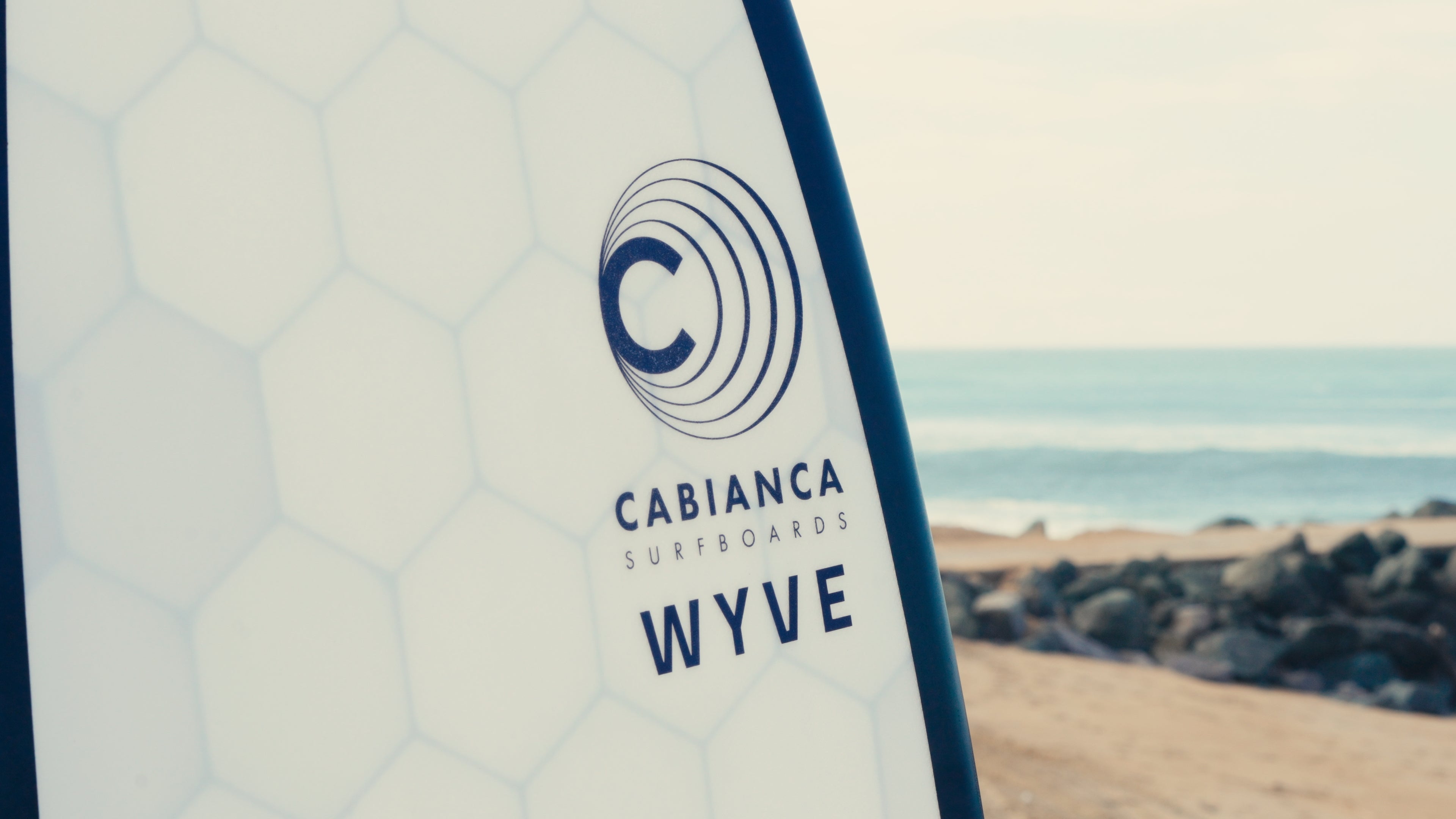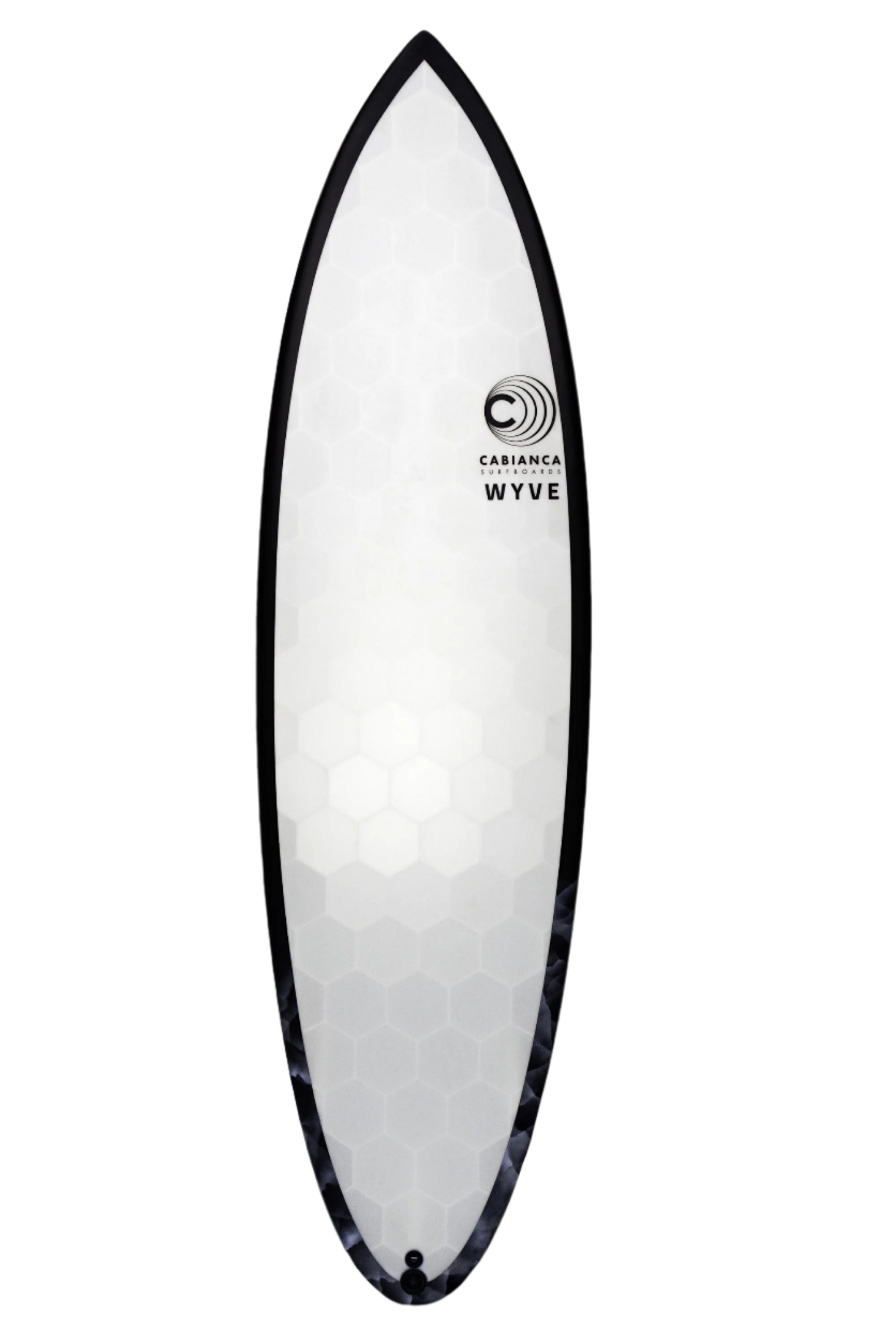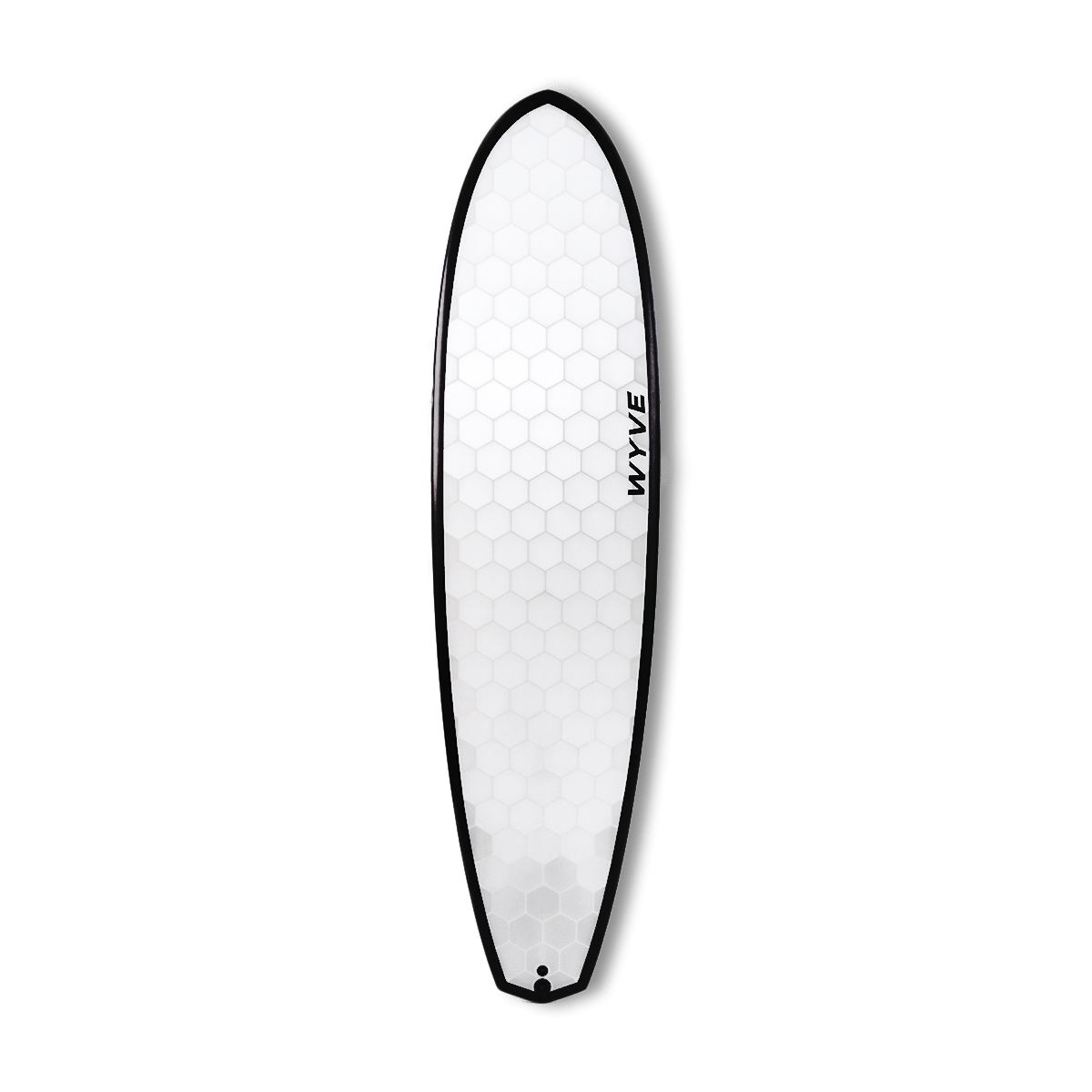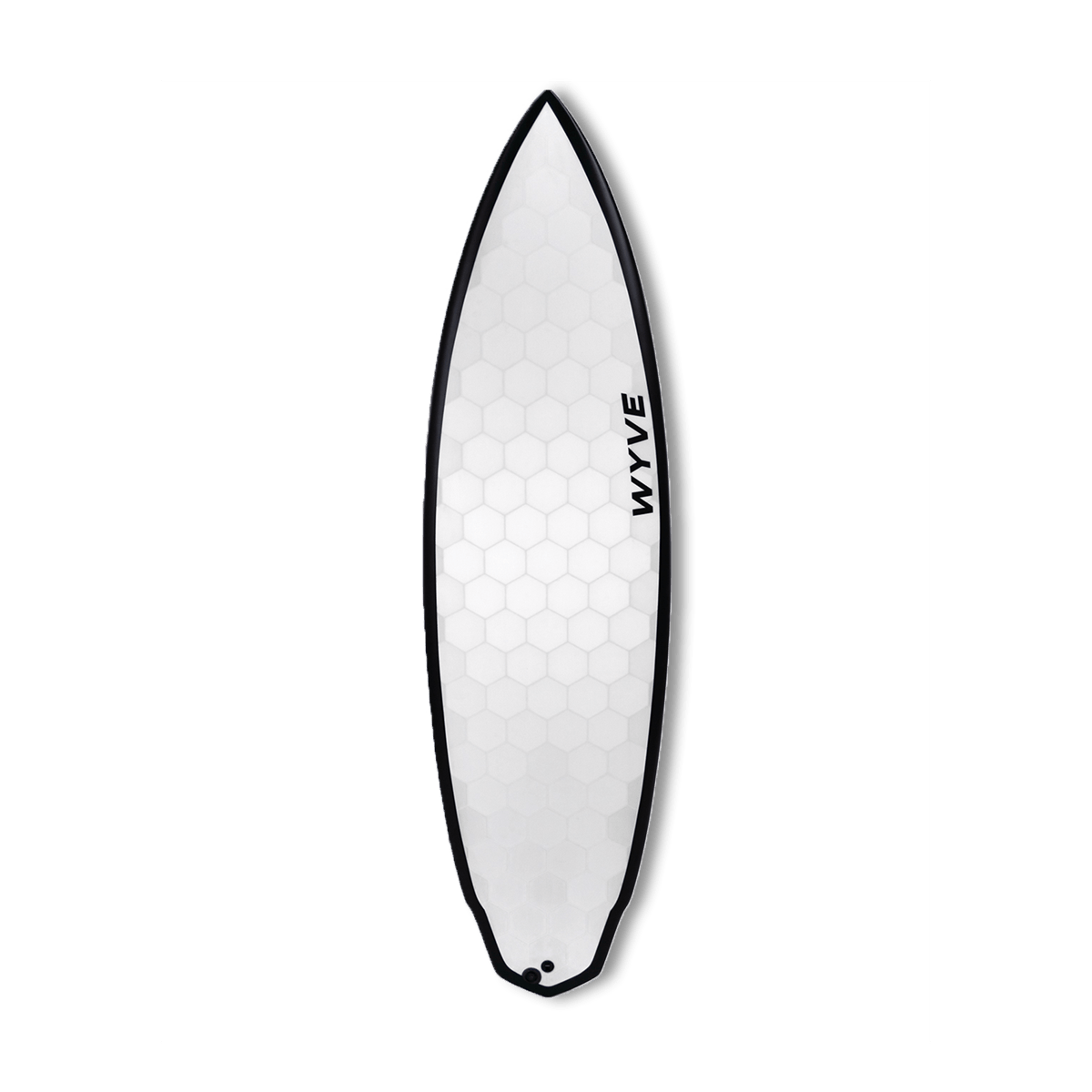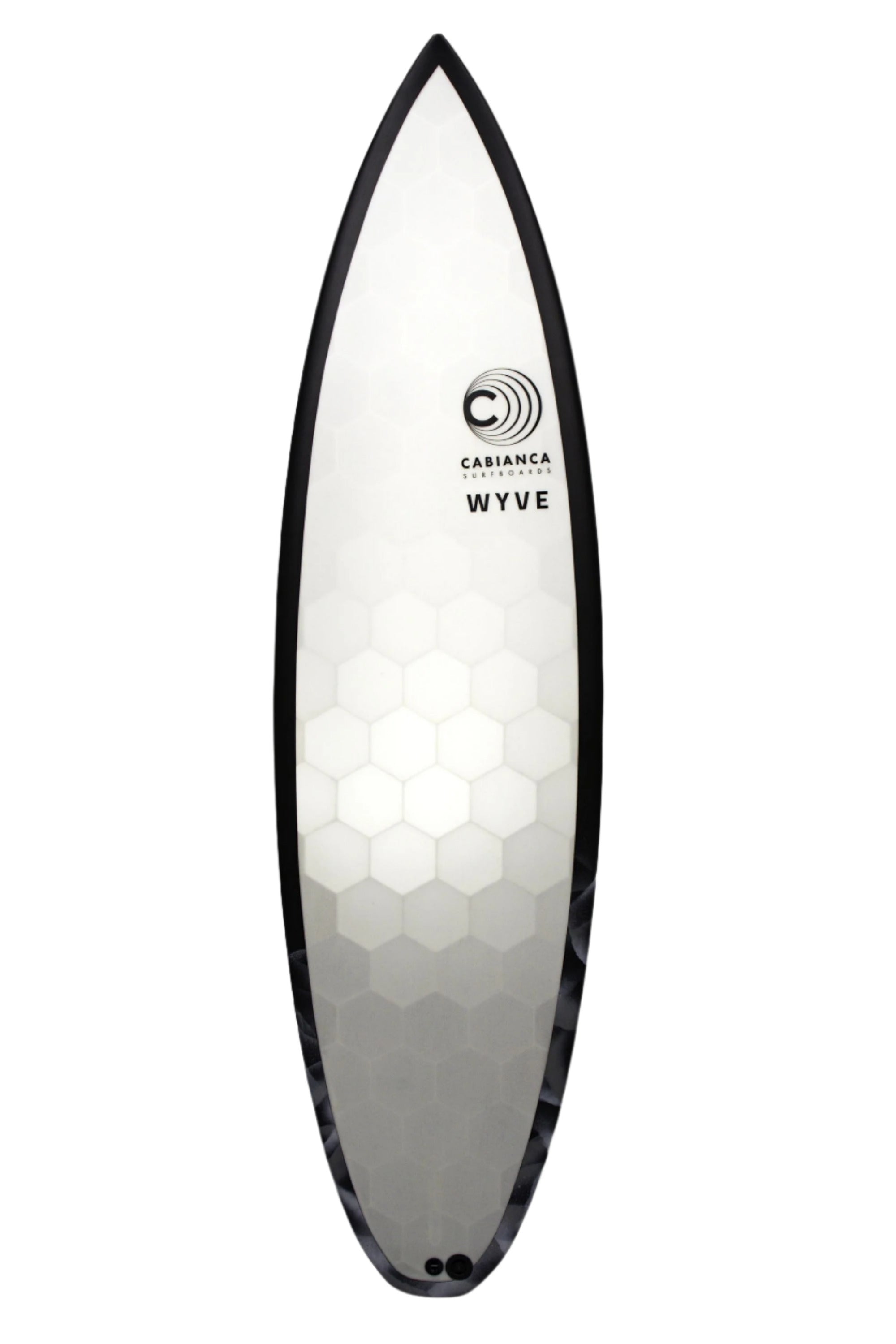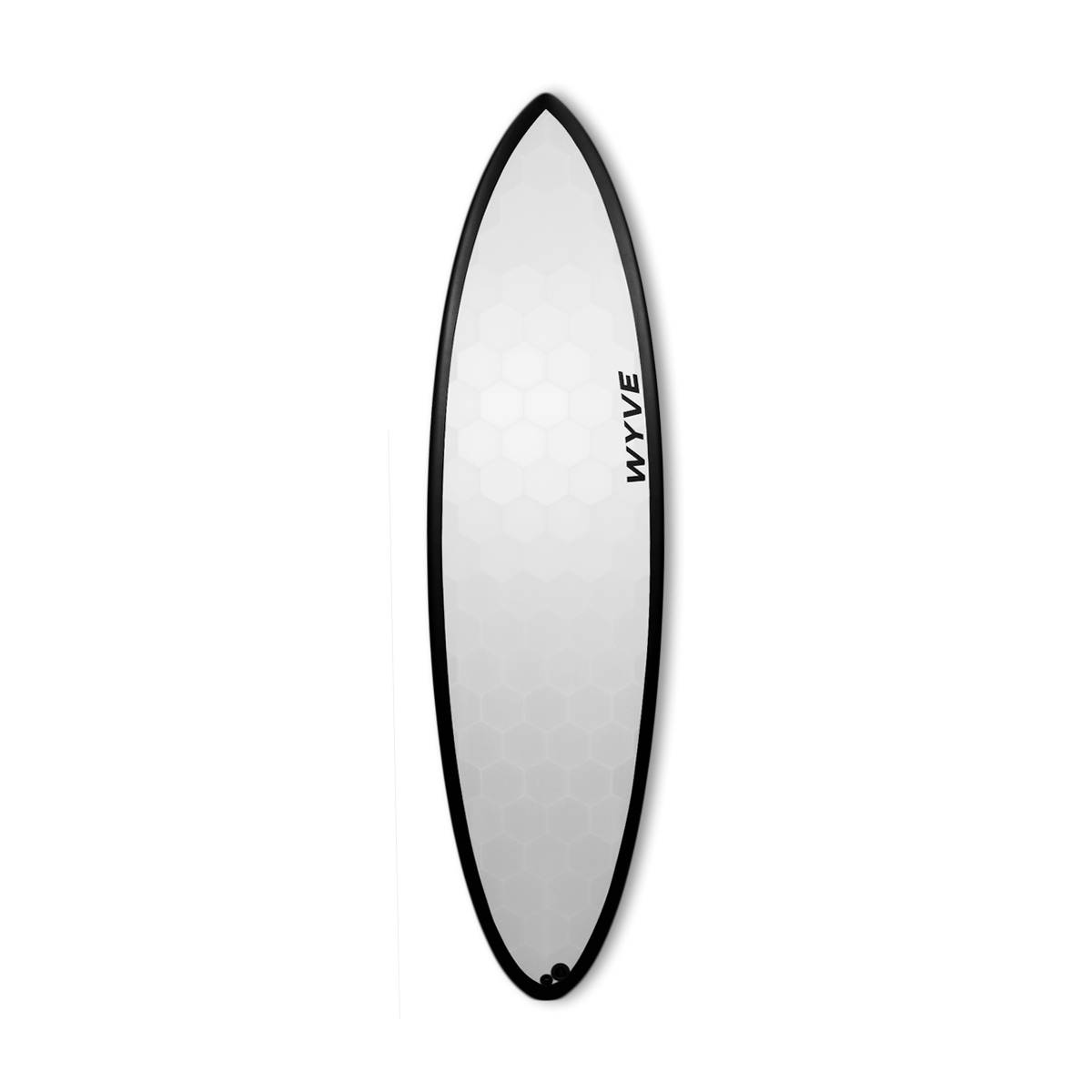At Wyve our boards are made to last over time. Here are some tips and information for repairing your Wyve surfboard as well as other surfboards.
With our patented 4D Core construction our surfboards are much more resistant to impacts than PU boards.
If you travel often, you know how airlines don't take care of the boards and that unpleasant surprises are common upon arrival. Holes and farts are common and are a real source of frustration.

Whether you are a beginner or an experienced surfer, one thing is certain: at one time or another, in your life as a surfer , your board will need to be repaired . Shocks and farts are inevitable, especially in the event of a collision with another surfer, or with rocks or the bottom.
Do not panic ! Repairing your Wyve surfboard can be simple and easy, during the design process we placed a lot of importance on the repairability of our boards.

You can easily repair your Wyve board using a standard commercial repair kit. If the board has taken on water, it is necessary to drain it via the valve. A small “fart” can be repaired using Solarez , a larger one by any shaper in a specialized workshop. This is also the advantage of Wyve surfboards.
Unlike a traditional board, whose foam block “drinks” water, the openwork structure of Wyve boards allows the board to be drained . Opening the valve on the tail is very easy using the tool provided when your board is delivered.
Once opened, the water will naturally descend to empty (all hexagons are connected to each other). Once empty, simply repair and then screw the valve back on.

In the event of damage to the internal PLA structure, we can re-print the missing part(s) and then re-assemble them. In this case, contact us directly.
The different constructions of surfboards
Before you begin repairs, it is important to understand the different constructions of surfboards . The two most common constructions are epoxy boards and polyester boards, there are also foam surfboards and BIC type plastic boards.
Wyve boards enter a new category of surfboard, they are built around a PLA core which is 3D printed, then laminated with a bio-sourced resin. This technique makes it possible to offer high-performance, durable boards with a lower environmental impact.
Epoxy boards are stronger than polyester boards. They have a longer lifespan and are more resistant to impacts . Tahe, Bic and SIC boards are the strongest, they are heavier, but above all they are the most difficult boards to repair with their plastic materials.
Polyester boards are still the most common, they are less expensive than epoxy boards. Polyester resin surfboards are also easier to repair. However, they are more fragile with less impact resistance compared to those made of epoxy.
For the most common small repairs , there are repair kits you can use yourself. If your board has suffered significant damage, you will need to consider having it repaired by a Shaper, a surf shop or a repairer.

Solarez DIY repair kits
One of the best ways to repair your surfboard is to use a Solarez repair kit. These kits are very simple to use and allow you to quickly repair small holes, cracks and chips. The big advantage of its kits is also that the repair is done in a flash. If you are going on a surf trip, we strongly recommend that you add a repair kit to your boardbag . It is one of the essential accessories for traveling.
Solarez repair kits are available in two types: polyester resin and epoxy resin. UV resin is ideal for small repairs because it cures in minutes under exposure to sunlight. Epoxy resin is stronger and is better suited for larger repairs.
There are several kits in the Solarez range: Microlite, Epoxy and Polyester
-
The microlite solution is perfect for filling holes in your board (polyester version)
-
The Ding Expoy kit is suitable for type, Torq and NSP epoxy boards
-
The Sponge REX kit is suitable for foam boards and bodyboards with EVA foam coverings
Larger repairs: Although Solarez repair kits are useful for small repairs, larger repairs often require professional help. For major repairs, it is advisable to contact a professional shaper or repairer to ensure the board is repaired correctly. This can be expensive, but it ensures that the board will be in good condition and performing well for many sessions to come.
Other repair kits, you will find other repair kits on our online store for more important repairs.

The most common repairs on a surfboard
List of the most common damages to a surfboard
-
The damaged Nose
-
A Cracked Tail
-
Cracks on the rails
-
Weakened/ripped aileron plug
-
Surfboard broken in two
-
Surf fin kick (coming from another board)
-
Stone sinking
-
Delamination
Deep dents can create cracks in the resin and fiber, this type of damage results in the most common repairs for surfboards. In this case, solarez kilts are a good option. Simply apply the resin, expose it to the sun for a few minutes and you're done.
For larger repairs, you may need to use epoxy resin. You can fill the hole with micro balloon epoxy resin. And add fiberglass to reinforce the repair.

Frequently asked Questions :
How long does it take to repair a surfboard?
The duration of the repair depends on the severity of the damage. Small repairs can be completed in minutes, while larger repairs can take several hours or even days.
Can I repair my surfboard myself?
Yes, you can repair your surfboard yourself.
Can I repair an epoxy surfboard with polyester resin?
The answer is no, do not venture into this repair, because you risk damaging your surfboard for nothing. Polyester resin solvents can attack the EPS foam block. In summary, to avoid destroying your board:
-
Epoxy board = epoxy repair kit
-
Polyester board = polyester repair kit
Can I continue to surf on a board with a repair?
Yes, it is possible to continue surfing on a repaired surfboard if the repair is done professionally and soundly. However, it is important to monitor the repair and check its condition regularly to ensure that it remains strong.
How to repair a deep crack in a surfboard?
For deep cracks, you need to remove the old layers of fibers then add new layers of resin and fiberglass to reinforce the damaged area. This repair can be complex and it is advisable to call a professional.
How to repair delamination on a surfboard?
To repair delamination, you need to remove the peeled part, clean the area, and add a new layer of resin and fiberglass. It is important to press the area well to ensure the new layer adheres properly.
How to repair an epoxy surfboard?
Repairs to an epoxy surfboard are similar to those to a polyester board, but you must use specific products for epoxy.
How to avoid bubbles when repairing a surfboard?
To avoid air bubbles during repair, it is important to mix the resin well and distribute it evenly over the damaged area. It is also important to use a spatula to smooth the surface of the resin to avoid air pockets.
Tips for Preventing Surfboard Damage:
-
Avoid direct impact with hard objects such as rocks or pier posts, use care when handling your board.
-
Avoid leaving your board exposed to the sun for long periods of time, especially when not in use.
-
Transport your surfboard in a protective cover.
In conclusion, repairing a surfboard may seem intimidating at first, but with the right tools and method, it is a doable process for all surfers. Solarez repair kits are a great way to get started and quickly repair minor damage.
However, for larger repairs it is advisable to call in a professional to ensure the board is repaired correctly and safely.



